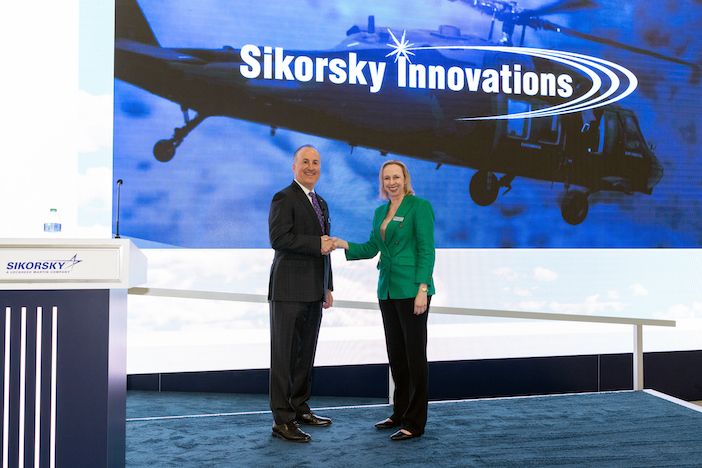Sikorsky is building a fully autonomous hybrid-eVTOL to use as a flying testbed for evaluating new designs and novel propulsion systems for longer range aircraft.
The hybrid-electric demonstrator will be called Hex and have a maximum gross weight of 7,000 lbs (3,175kg). The unmanned aircraft will also be used to test control architectures for sustained hover and ranges greater than 575 miles (925km).
GE Aerospace is to supply a CT7 turboshaft engine combined with 1MW-class generator and associated power electronics for Hex. GE Aerospace is already building similar hybrid-electric propulsion systems for NASA and the US Army.
Paul Lemmo, Sikorsky president said, “Sikorsky’s Hex aircraft will provide critical insights into the possibilities of electric systems in VTOL aircraft. Ultimately, we want to show the potential of large, advanced air mobility vehicles to perform utility missions for the US military and transport passengers between cities.”
“Bringing innovative technology is a top priority for GE Aerospace,” said Amy Gowder, president and CEO of defense and systems at GE Aerospace. “We are committed to developing hybrid electric propulsion systems that save fuel and optimize performance for the military and commercial applications. We are thrilled to build off our existing work with NASA and the Army to offer to power Sikorsky’s HEX aircraft and bolster the future of flight.”
The Hex program will be led by the Sikorsky Innovations rapid prototyping group and its director, Igor Cherepinsky. Sikorsky’s Innovations team will design, build and integrate the HEX airframe and electric motors with the company’s Matrix autonomous flight control system.
The Matrix system will control flight aboard the HEX aircraft. It has been developed and tested over the past decade in low-altitude and obstacle-rich scenarios. During the U.S. Army’s Project Convergence 2022 exercise, a Matrix-controlled Black Hawk helicopter without pilots or crew on board demonstrated optionally piloted resupply missions.
The company believes that the Hex program could lead to a family of eVTOL vehicles scaled to carry passengers and payload for both military and commercial applications.





